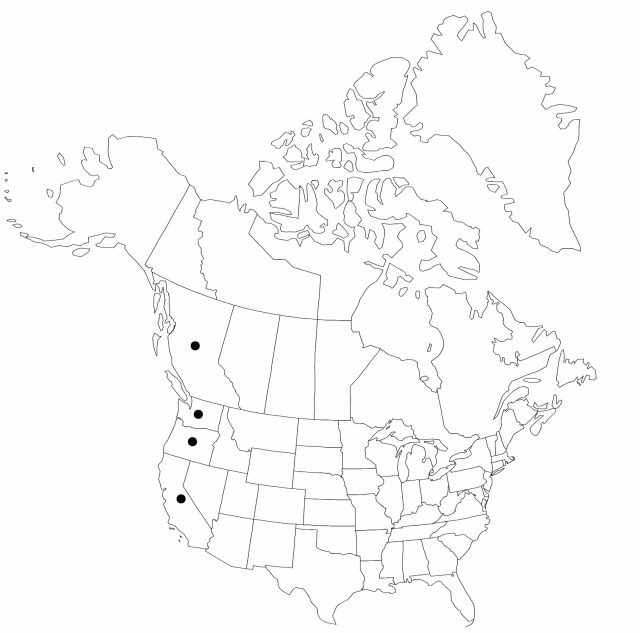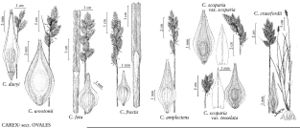Difference between revisions of "Carex feta"
Bull. Torrey Bot. Club 20: 417. 1893.
FNA>Volume Importer |
imported>Volume Importer |
||
| (3 intermediate revisions by 2 users not shown) | |||
| Line 6: | Line 6: | ||
|place=20: 417. 1893 | |place=20: 417. 1893 | ||
|year=1893 | |year=1893 | ||
| + | }} | ||
| + | |special_status={{Treatment/ID/Special_status | ||
| + | |code=F | ||
| + | |label=Illustrated | ||
| + | }}{{Treatment/ID/Special_status | ||
| + | |code=E | ||
| + | |label=Endemic | ||
}} | }} | ||
|basionyms={{Treatment/ID/Basionym | |basionyms={{Treatment/ID/Basionym | ||
|name=Carex straminea var. mixta | |name=Carex straminea var. mixta | ||
|authority=L. H. Bailey | |authority=L. H. Bailey | ||
| + | |rank=variety | ||
|publication_title=Proc. Amer. Acad. Arts | |publication_title=Proc. Amer. Acad. Arts | ||
|publication_place=22: 151. 1887, | |publication_place=22: 151. 1887, | ||
| Line 36: | Line 44: | ||
-->{{#Taxon: | -->{{#Taxon: | ||
name=Carex feta | name=Carex feta | ||
| − | |||
|authority=L. H. Bailey | |authority=L. H. Bailey | ||
|rank=species | |rank=species | ||
| Line 50: | Line 57: | ||
|publication title=Bull. Torrey Bot. Club | |publication title=Bull. Torrey Bot. Club | ||
|publication year=1893 | |publication year=1893 | ||
| − | |special status= | + | |special status=Illustrated;Endemic |
| − | |source xml=https:// | + | |source xml=https://bitbucket.org/aafc-mbb/fna-data-curation/src/2e0870ddd59836b60bcf96646a41e87ea5a5943a/coarse_grained_fna_xml/V23/V23_629.xml |
|genus=Carex | |genus=Carex | ||
|section=Carex sect. Ovales | |section=Carex sect. Ovales | ||
Latest revision as of 20:42, 5 November 2020
Plants densely cespitose. Culms 51–97 cm. Leaves: sheaths adaxially green-veined nearly to collar, ± white-hyaline triangular area to 6 mm proximal to collar, firm, summits tinged brown, usually rounded, prolonged to 1.5–6 mm beyond collar; distal ligules (3–)4–8 mm; blades 3–4(–5) per fertile culm, 15–25(–45) cm × (2.5–)3–4(–5) mm. Inflorescences proximal branches often bearing several spikes, green to pale brown, 3.5–8 cm × 10–13 mm; proximal internode 5–12 mm; 2d internode 4–11 mm; proximal bracts bristlelike, shorter than inflorescences. Spikes (6–)8–12, distant, distinct, broadly ovoid, 11–18 × 6–8 mm, base attenuate, apex rounded. Pistillate scales white-hyaline or pale gold, with green, gold, or brown midstripe, lanceolate to ovate, 2.7–3.5 mm, somewhat shorter and narrower than perigynia, apex obtuse or acute. Perigynia ascending to ascending-spreading, white or gold conspicuously (1–)3–8-veined abaxially, conspicuously 1–7-veined adaxially, ovate to broadly ovate, flat or plano-convex, 3.2–4.2 × 1.7–2.1 mm, 0.4–0.5 mm thick, margin flat, including wing 0.3–0.5(–0.6) mm wide, ciliate-serrulate at least distally; beak white or gold at tip, flat, ± ciliate-serrulate, abaxial suture inconspicuous or with conspicuous white margin, distance from beak tip to achene (1.5–)1.8–2.4 mm. Achenes ovate to obovate, (1.3–)1.5–1.8 × 0.9–1.2 mm, 0.4–0.5 mm thick. 2n = 66.
Phenology: Fruiting late spring–summer.
Habitat: Meadows, forest edges, stream banks, wet soils
Elevation: 30–2400 m
Distribution

B.C., Calif., Oreg., Wash.
Discussion
Selected References
None.
